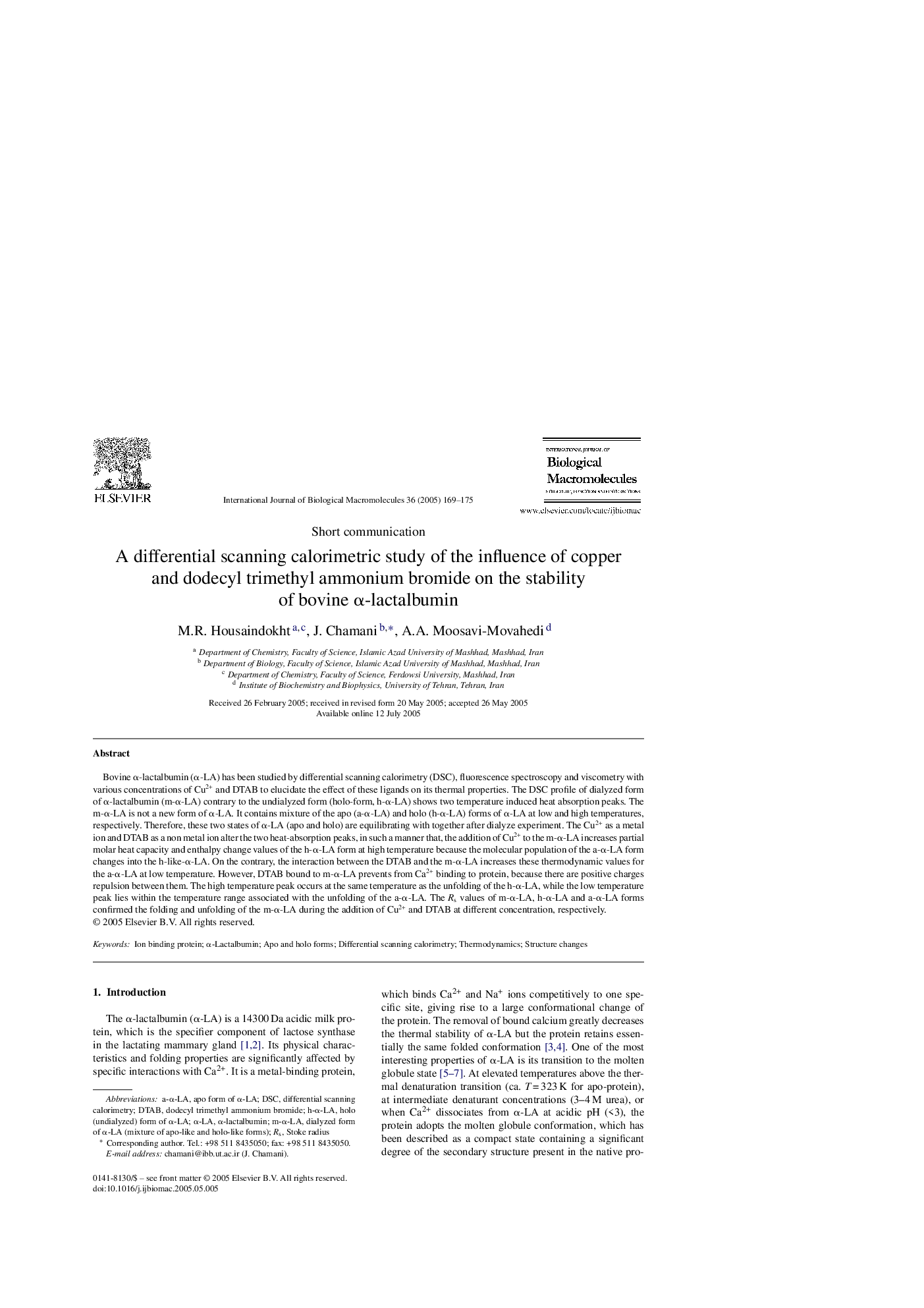| Article ID | Journal | Published Year | Pages | File Type |
|---|---|---|---|---|
| 9890889 | International Journal of Biological Macromolecules | 2005 | 7 Pages |
Abstract
Bovine α-lactalbumin (α-LA) has been studied by differential scanning calorimetry (DSC), fluorescence spectroscopy and viscometry with various concentrations of Cu2+ and DTAB to elucidate the effect of these ligands on its thermal properties. The DSC profile of dialyzed form of α-lactalbumin (m-α-LA) contrary to the undialyzed form (holo-form, h-α-LA) shows two temperature induced heat absorption peaks. The m-α-LA is not a new form of α-LA. It contains mixture of the apo (a-α-LA) and holo (h-α-LA) forms of α-LA at low and high temperatures, respectively. Therefore, these two states of α-LA (apo and holo) are equilibrating with together after dialyze experiment. The Cu2+ as a metal ion and DTAB as a non metal ion alter the two heat-absorption peaks, in such a manner that, the addition of Cu2+ to the m-α-LA increases partial molar heat capacity and enthalpy change values of the h-α-LA form at high temperature because the molecular population of the a-α-LA form changes into the h-like-α-LA. On the contrary, the interaction between the DTAB and the m-α-LA increases these thermodynamic values for the a-α-LA at low temperature. However, DTAB bound to m-α-LA prevents from Ca2+ binding to protein, because there are positive charges repulsion between them. The high temperature peak occurs at the same temperature as the unfolding of the h-α-LA, while the low temperature peak lies within the temperature range associated with the unfolding of the a-α-LA. The Rs values of m-α-LA, h-α-LA and a-α-LA forms confirmed the folding and unfolding of the m-α-LA during the addition of Cu2+ and DTAB at different concentration, respectively.
Keywords
Related Topics
Life Sciences
Biochemistry, Genetics and Molecular Biology
Biochemistry
Authors
M.R. Housaindokht, J. Chamani, A.A. Moosavi-Movahedi,
